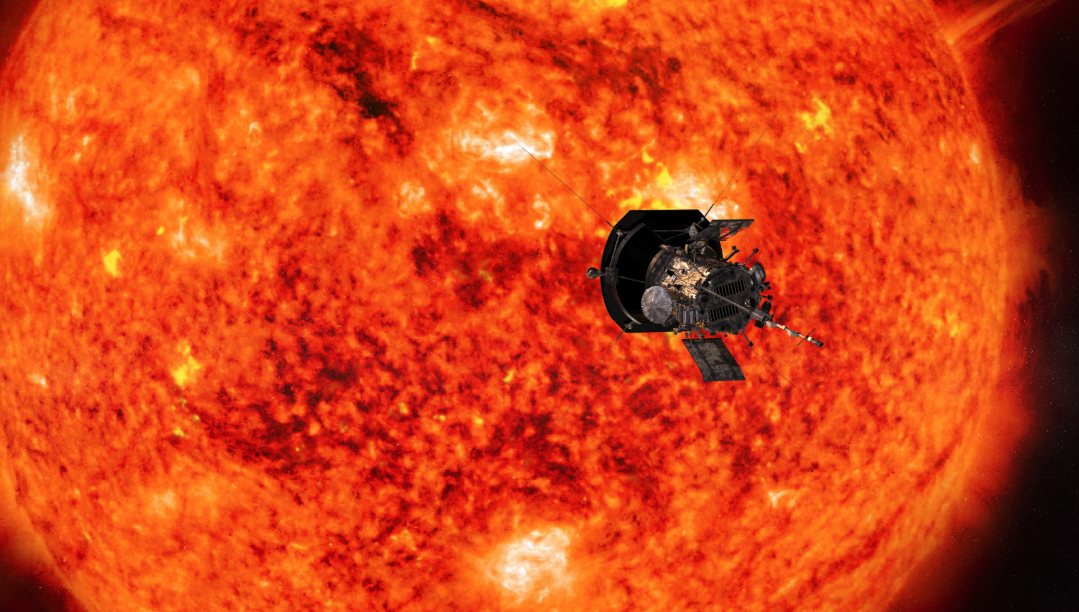NASA spacecraft breaks its own record with another swing by the sun

NASA's Parker Solar Probe took one step closer to the sun Wednesday (Jan. 29) when it executed its fourth flyby of our star.
This is the first such maneuver, called a perihelion, that the spacecraft has completed since swinging past Venus in December, a move that shrank the probe's orbit. That so-called gravity assist means Parker Solar Probe broke its own record today for the closest a spacecraft has come to the sun, as the probe will continue to do repeatedly over the course of its seven-year mission.
At about 4:30 a.m. EST (0930 GMT), Parker Solar Probe's trajectory carried the spacecraft within about 11.6 million miles (18.6 million kilometers) of the sun, more than 3 million miles (5 million km) closer than previous flybys. Before Parker Solar Probe's launch, no spacecraft had come within 26.5 million miles (43 million kilometers) of the sun, a record set by the Helios 2 mission in 1976.
Related: Hello, Venus! Parker Solar Probe Makes Second Planetary Flyby.
Parker Solar Probe won't have competition for its records anytime soon. But it will have some company in its work studying our star. The European Space Agency and NASA's joint mission to the sun, dubbed Solar Orbiter, is currently scheduled to launch on Feb. 7.
Augmenting the observations Parker Solar Probe is taking, Solar Orbiter will study the poles of the sun, which are out of view of the NASA probe. Solar Orbiter carries more instruments than Parker Solar Probe does, but the two spacecraft share a few tools, so scientists will be able to easily compare the data the probes gather from different locations around the sun.
Related: NASA's Parker Solar Probe Mission to the Sun in Pictures
Breaking space news, the latest updates on rocket launches, skywatching events and more!
In particular, scientists want to better understand why the sun's outer atmosphere is so much hotter than the star's visible surface and how the solar wind material that streams off the sun reaches such high speeds.
If all goes well with the Solar Orbiter launch next month, some of that probe's instruments will be turned on by the time Parker Solar Probe makes its next perihelion, on June 7. Parker Solar Probe is making a series of 24 close flybys of the sun through 2025 in order to help scientists understand how the sun works.
The first three flybys, conducted in 2018 and 2019, already introduced solar scientists to newfound phenomena. In a first batch of scientific papers from the mission, published in December 2019, researchers started pinning down new ideas about the solar wind.
- What's Inside the Sun? A Star Tour from the Inside Out
- NASA's Parker Solar Probe Mission to the Sun in Pictures
- NASA Sun Probe Spies the Solar Wind in 1st Birthday Photo
Email Meghan Bartels at mbartels@space.com or follow her @meghanbartels. Follow us on Twitter @Spacedotcom and on Facebook.


Meghan is a senior writer at Space.com and has more than five years' experience as a science journalist based in New York City. She joined Space.com in July 2018, with previous writing published in outlets including Newsweek and Audubon. Meghan earned an MA in science journalism from New York University and a BA in classics from Georgetown University, and in her free time she enjoys reading and visiting museums. Follow her on Twitter at @meghanbartels.
